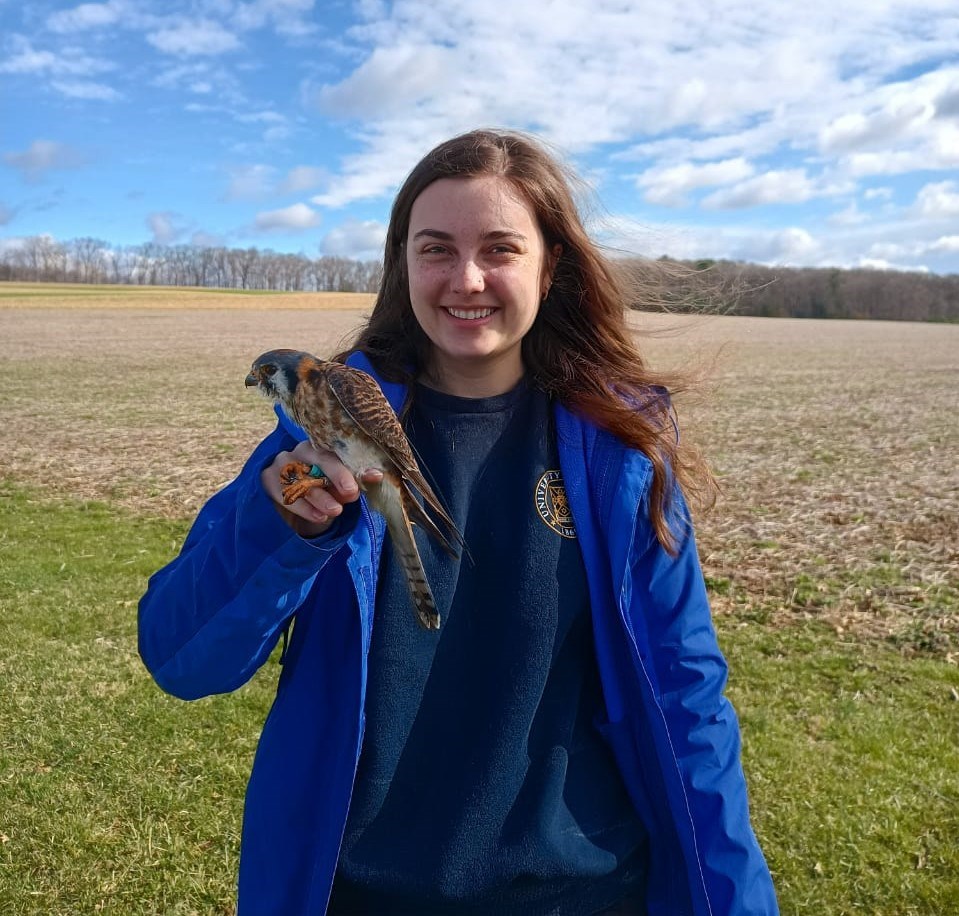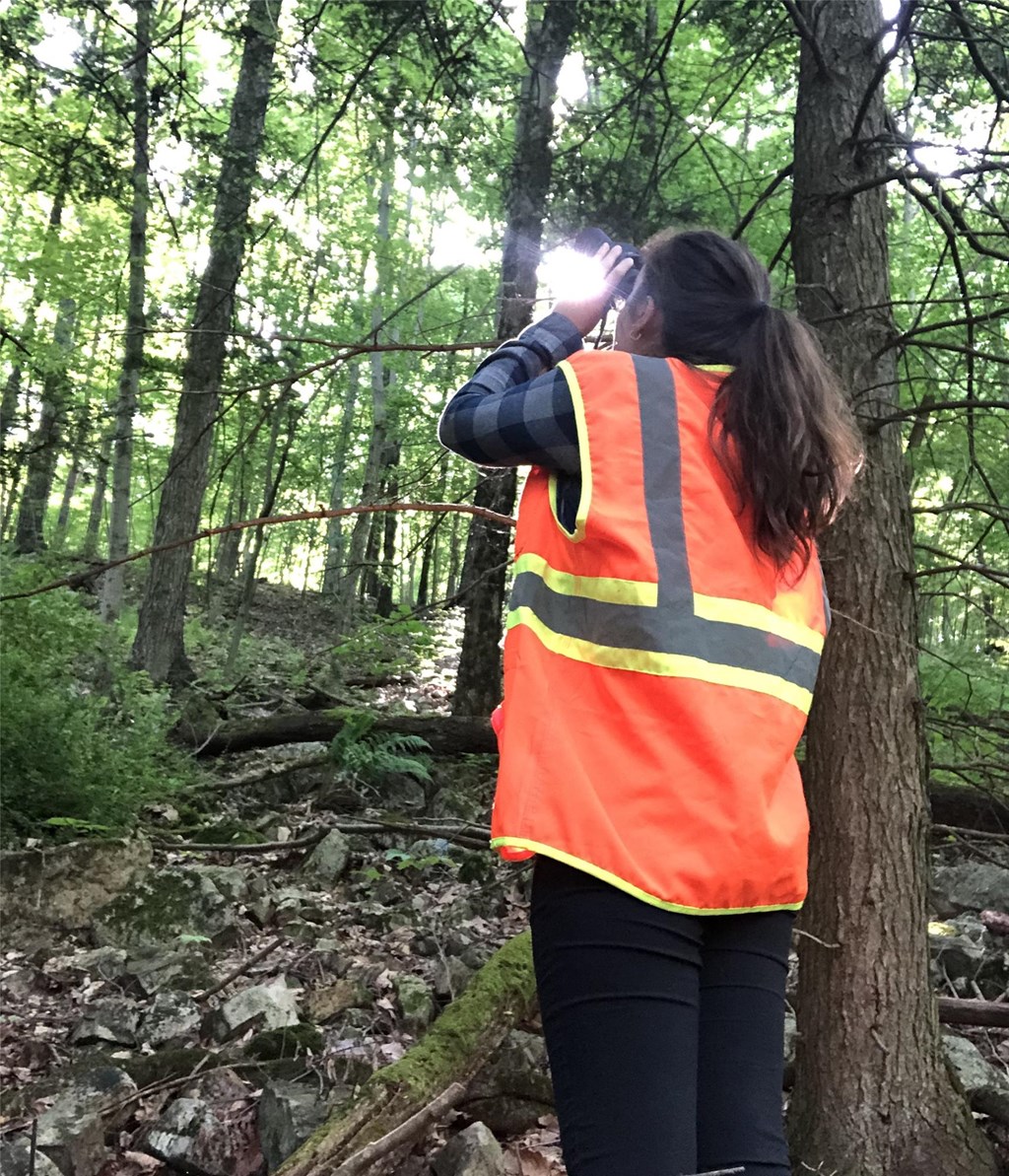Entering the World of Conservation Research
Posted on in On the Mountain by Julia Runkle, Spring 2022 Conservation Science Trainee

Before coming to Hawk Mountain, I had very little experience with birds in general, let alone field experience with raptors. I had never even taken an ornithology class! I was pretty nervous about working with PhD candidates, post-docs, and other seasoned biologists at such a renowned raptor sanctuary, but the support I received from the staff and my fellow trainees quickly eased my worries.
Practicing our raptor identification skills together, I realized that maybe I wasn’t totally in over my head. I had seen a number of these raptors before – red-tailed hawks, bald eagles, American kestrels, vultures, osprey. I could learn the others, especially with a few helpful hints from David Barber, like, “sharp-shinned hawks look like flying mallets with small tucked-in heads, while Cooper’s hawks look like flying crosses with large squared-off heads.” Now, I wouldn’t say I’m an expert at raptor identification yet, but the spring migration count went smoothly. I was able to spot and identify a decent amount of birds that passed overhead. The more experienced trainees and volunteer counters helped me to see the ones I hadn’t noticed and identify the ones I had trouble distinguishing.
After the migration season concluded, we really got started working in the field. The projects that I mainly participated in were the Broad-winged Hawk Project and a nesting songbird census. For the broad-winged hawk research, I had to look for nests in the vicinity of last year’s nests. Should be easy, right? Nope. Finding stick nests in the crotch of trees is difficult! But with Becca McCabe, Laurie Goodrich, and some other trainees all searching, we were able to find a few. While it wasn’t easy work, I enjoyed the search. Plus, it was so rewarding when we actually found an active nest. I monitored several active nests and was able to see the mother incubating her eggs. Hopefully, we will be able to see the nestlings once they hatch! I really enjoyed being able to participate in a nest study; it helped me to better understand breeding ecology studies and the type of work needed to conduct them.

For the songbird census, I had to get up at 4:30 am, which is way too early in my opinion. But the early morning is a beautiful time of day to be in the woods, so it wasn’t too bad. There are lots of wildlife out at dawn, and some of the plots had a great view of the sunrise. After hiking out, I listened for ovenbirds and black and white warblers for 10-minute increments at plots both with and without invasive stilt grass. I noted the approximate location of the birds and whether they were within the plots or outside of their 50 meter radius. The census was part of a larger project looking into the effects of stilt grass on the forest. This project really got me thinking about the different questions that we, as scientists, can ask and hopefully answer with our research.
I am particularly interested in questions regarding anthropogenic influences on wildlife and human-wildlife conflict. So when Laurie asked if I wanted to work on a literature review with her about how climate change will likely affect raptor migration, I jumped at the opportunity. I searched journals and databases, scanned through the abstracts, and compiled a document of relevant articles. From there I created a basic outline for my paper, grouping together articles with similar findings and paraphrasing their main ideas. I was then able to start drafting my paper. We hope to co-publish it in a scientific journal, which will be my first publication!
With all of this experience, I feel so much more prepared for the next steps in my career. I am currently in the process of applying to graduate schools for a master’s in wildlife biology, and in the future, I hope that I will be able to conduct my own research, discovering win-win solutions for human-wildlife conflicts.